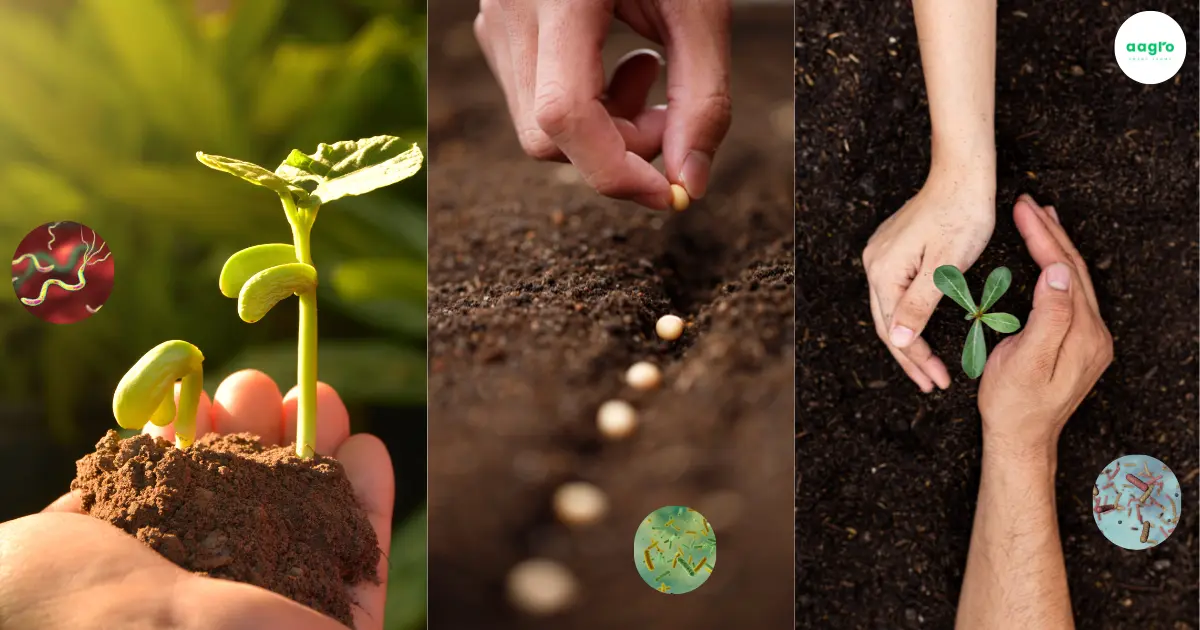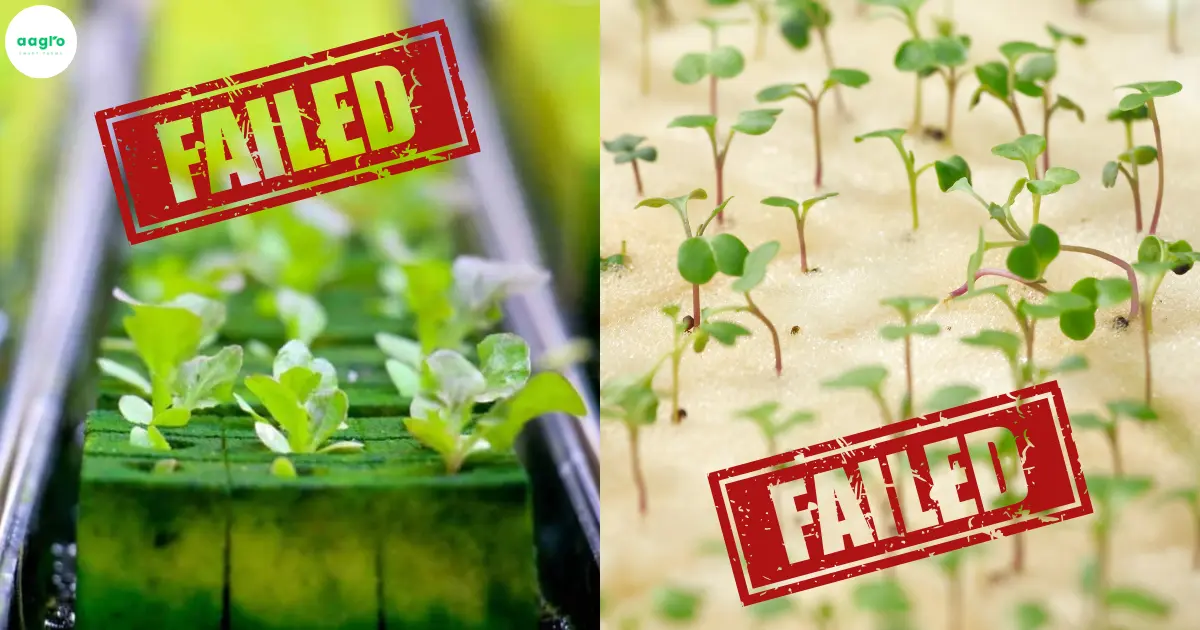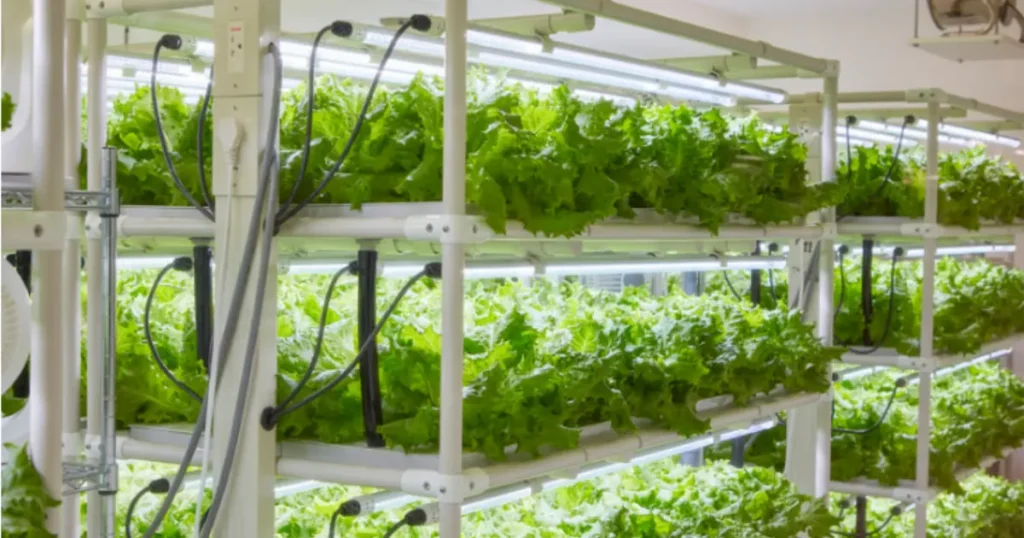7 Unknowing Facts About Vertical Farming in India That Will Blow Your Mind !
Table of Contents
ToggleIntroduction
Discover 7 lesser-known facts about vertical farming in India, including the revolutionary hydroponics vertical farming technique. Learn how this innovative farming method is changing the agricultural landscape of India and paving the way for sustainable urban farming.
In the fast-paced world we live in, urbanization and population growth are putting significant pressure on traditional farming methods. Vertical farming, particularly hydroponics vertical farming, has emerged as a game-changing solution to these challenges, especially in India. This farming technique involves growing crops in assembled layers, and is transforming agriculture by making it more efficient, sustainable and space-saving.
We are here to uncover 7 unknown facts about vertical farming in India that will not only surprise you but also highlight how this innovative approach is revolutionizing agriculture in the country. From water conservation to boosting food security, vertical farming in India is gaining immense popularity. Let’s explore the powerful impact of hydroponics vertical farming and what makes it an incredible solution for the future of food production with aagro.
1. Vertical Farming in India is Revolutionizing Indian Agriculture
India, with its diverse climate and growing population, has long struggled with food security and sustainable agricultural practices. In India, Vertical farming is proving to be a game-changer. The ability to grow crops on vertical surfaces allows farmers to utilize less space while producing a higher yield. This method is especially useful in urban areas where space is scarce but demand for fresh produce is high.
By adopting vertical farming techniques like hydroponics vertical farming, farmers can optimize space usage, reduce transportation costs, and increase the variety of crops grown. In India vertical farming offers a viable solution where traditional farming often faces challenges such as unpredictable weather patterns and limited arable land.
2. Hydroponics Vertical Farming Uses 90% Less Water than Traditional Farming
Water scarcity is one of the biggest obstacles faced by farmers in India. Traditional farming methods consume a massive amount of water, leading to depletion of local water resources. Whereas Hydroponics vertical farming utilizes a highly efficient system where plants are grown in nutrient-rich water solutions instead of soil. This technique uses about 90% less water compared to traditional agriculture.
In hydroponic systems, water is recirculated which reducing waste and ensuring that plants receive the optimal amount for growth. Country like India, which frequently faces water shortages, adopting hydroponic vertical farming could significantly reduce the strain on water resources, making it an essential practice for the future.
3. Vertical Farming is perfect for Urban Spaces in India
With rapid urbanization, India’s cities are growing at an unprecedented rate. The increasing demand for fresh produce in urban areas is putting pressure on rural farms and the environment. Vertical farming in India offers an innovative solution to this problem, especially in crowded cities where traditional farming is not feasible.
Hydroponics vertical farming systems can be set up in small spaces such as rooftops, balconies, and warehouses. This means that urban residents can grow their own fresh produce, reducing their dependence on long supply chains and lowering carbon emissions associated with transportation
4. Hydroponics Vertical Farming Reduces the Need for Pesticides
In traditional farming, the use of pesticides and chemical fertilizers is common to protect crops from pests and disease. However, these chemicals often end up contaminating the soil and water. With hydroponics vertical farming, the risk of pesticide use is significantly reduced. Because plants are grown in a controlled environment, pests are less likely to infest them, eliminating the need for harmful chemicals.
Additionally, the closed-loop system in hydroponics means that the nutrient solution is constantly recycled and purified, reducing the chance of disease outbreaks. This makes hydroponic farming a cleaner and more sustainable alternative to conventional farming methods, benefiting both the environment and human health.
5. Vertical Farming Can Grow a Variety of Crops, Not Just Leafy Greens
One of the common misconceptions about vertical farming is that it can only grow leafy greens like lettuce and spinach. While it’s true that these crops are commonly grown in vertical farms, hydroponics vertical farming can support a wide range of crops. Tomatoes, peppers, herbs, strawberries, and even small fruits can thrive in vertical farming systems, making it a versatile option for diverse food production.
With advancements in hydroponic technology, farmers can grow a variety of crops that were once thought to be unsuitable for vertical farming. This opens up new possibilities for food diversity and local food production in urban areas across India.
6. Vertical Farms Can Produce Crops Faster
Time is a critical factor in agriculture, especially when it comes to meeting the demands of a growing population. Vertical farming in India, specifically hydroponics vertical farming, allows crops to grow faster compared to traditional methods. In a hydroponic system, plants are provided with a constant supply of water, nutrients, and optimal light conditions, which leads to quicker growth cycles.
This means that farmers can harvest crops multiple times a year, increasing the overall yield per square foot of space. For urban populations in India, where the demand for fresh produce is ever-growing, this faster production cycle makes vertical farming an attractive option.
7. Vertical Farming is Reducing Carbon Footprints
The environmental impact of agriculture cannot be ignored. Traditional farming methods contribute to deforestation, soil degradation, and significant carbon emissions from machinery and transportation. Vertical farming in India, however, has the potential to reduce carbon footprints significantly.
Since vertical farms are often located near urban centers, the need for long-distance transportation is minimized, reducing greenhouse gas emissions. Additionally, the closed-loop nature of hydroponic systems means that resources like water and nutrients are used more efficiently, further lowering the environmental impact. As India looks to meet sustainability goals, vertical farming offers a promising solution.
In the nutshell vertical farming in India:
Vertical farming in India, particularly hydroponics vertical farming, is paving the way for a more sustainable and efficient agricultural system. From conserving water to growing a diverse range of crops in urban environments, this innovative farming method is proving to be a powerful tool in addressing food security, resource conservation, and environmental sustainability.
As India continues to face the challenges of urbanization, climate change, and population growth, adopting vertical farming techniques will be crucial in ensuring that the country can meet its food production demands without compromising its natural resources. By harnessing the power of hydroponics and other vertical farming techniques, India can build a future where food is abundant, fresh, and grown sustainably.
Q1. What is vertical farming, and how does it work?
Q2. How is hydroponics vertical farming different from traditional farming?
Q3. What are the main benefits of hydroponics vertical farming in India?
Q4. Can vertical farming in India grow all types of crops?
Q5. Is vertical farming in India a cost-effective solution?
-
Bacteria: The Remarkable Role of Microbes for Growing Plants in Hydroponics
-
Hydroponics: The Rookie Mistakes of Growing Plants
-
Chlorine: The Incredible Key to Thriving Hydroponic Plants
-
Molybdenum: Astonishing Importance for Hydroponic Plant Growth
-
Boron: The Astonishing Importance for Plants Growing in Hydroponics
-
Copper: A Powerful Element for Hydroponic Plant Growth
-
Zinc: The Powerful Secret to Hydroponic Plant Growth
-
Manganese: Essential role for Hydroponic Plant Growth
-
Iron: The Crucial Role of Iron in Hydroponic Plant Growth
-
Sulfur: The Vital Key to Thriving Hydroponic Plant Growth
-
Magnesium: The Crucial Role for Thriving Hydroponic Plants
-
Calcium: The Critical Importance for Thriving Hydroponic Plants
- All Posts
- Hydroponics

Bacteria in Hydroponics: Discover how beneficial bacteria boost plant growth, nutrient uptake, and disease resistance in soilless systems.

Discover the most common rookie mistakes in hydroponics and learn how to avoid them for thriving, high-yield plants.

Discover the crucial role of Chlorine in hydroponics and learn how to optimize levels for thriving, disease-resistant plants!

Unlock the secret to thriving hydroponic plants with molybdenum! Discover its vital role in growth, flowering, and stress tolerance.

Discover the vital role of Boron in hydroponic plant growth. Learn how to manage Boron levels for healthier, high-yield crops.

Copper is vital for hydroponic plant growth, enhancing photosynthesis, enzyme activation, and disease resistance for healthier, thriving crops.

Zinc is essential for hydroponic plant growth, aiding enzyme activation, nutrient absorption, and disease resistance for healthy yields.

Discover the crucial role of manganese in hydroponics, from boosting photosynthesis to preventing deficiencies and optimizing plant health.

Iron is essential for hydroponic plant growth, aiding photosynthesis, enzyme activation, and nutrient absorption for healthier, higher yields.

